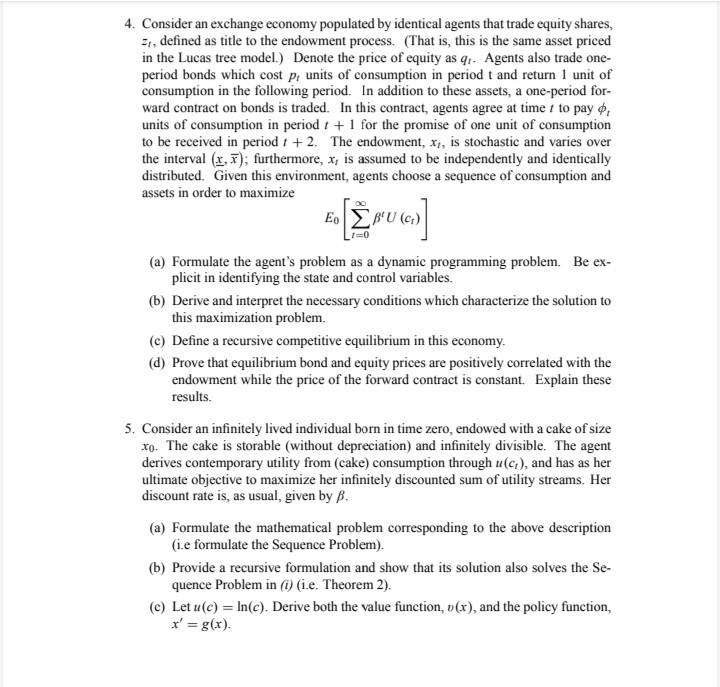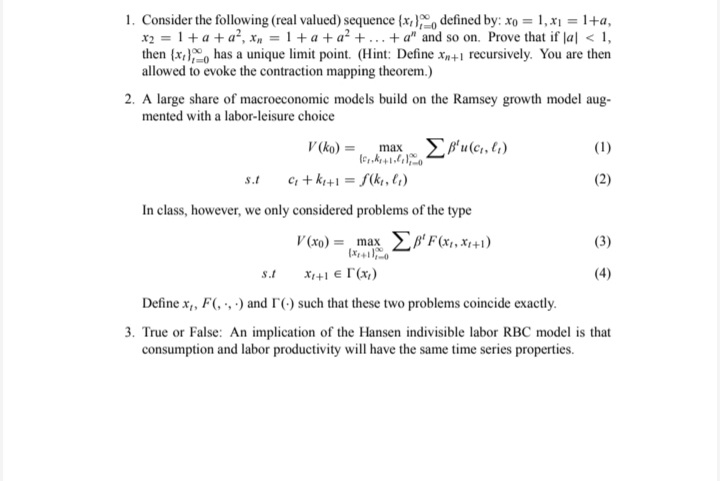need help. thankyou
4. Consider an exchange economy populated by identical agents that trade equity shares, , defined as title to the endowment process. (That is, this is the same asset priced in the Lucas tree model.) Denote the price of equity as q,. Agents also trade one- period bonds which cost p, units of consumption in period t and return 1 unit of consumption in the following period. In addition to these assets, a one-period for- ward contract on bonds is traded. In this contract, agents agree at time / to pay , units of consumption in period : + 1 for the promise of one unit of consumption to be received in period ? + 2. The endowment, x7, is stochastic and varies over the interval (x, x); furthermore, x, is assumed to be independently and identically distributed. Given this environment, agents choose a sequence of consumption and assets in order to maximize EO BU (CI) (a) Formulate the agent's problem as a dynamic programming problem. Be ex- plicit in identifying the state and control variables. (b) Derive and interpret the necessary conditions which characterize the solution to this maximization problem. (c) Define a recursive competitive equilibrium in this economy. (d) Prove that equilibrium bond and equity prices are positively correlated with the endowment while the price of the forward contract is constant. Explain these results. 5. Consider an infinitely lived individual born in time zero, endowed with a cake of size xo. The cake is storable (without depreciation) and infinitely divisible. The agent derives contemporary utility from (cake) consumption through w(c,), and has as her ultimate objective to maximize her infinitely discounted sum of utility streams. Her discount rate is, as usual, given by B. (a) Formulate the mathematical problem corresponding to the above description (i.e formulate the Sequence Problem). (b) Provide a recursive formulation and show that its solution also solves the Se- quence Problem in (i) (i.e. Theorem 2). (c) Let u(c) = In(c). Derive both the value function, o(x), and the policy function, x' = g(x).1. Consider the following (real valued) sequence (x, ),, defined by: x0 = 1, x1 = 1+a, x=ltata', x, = l + at a' +... + a" and so on. Prove that if la|








